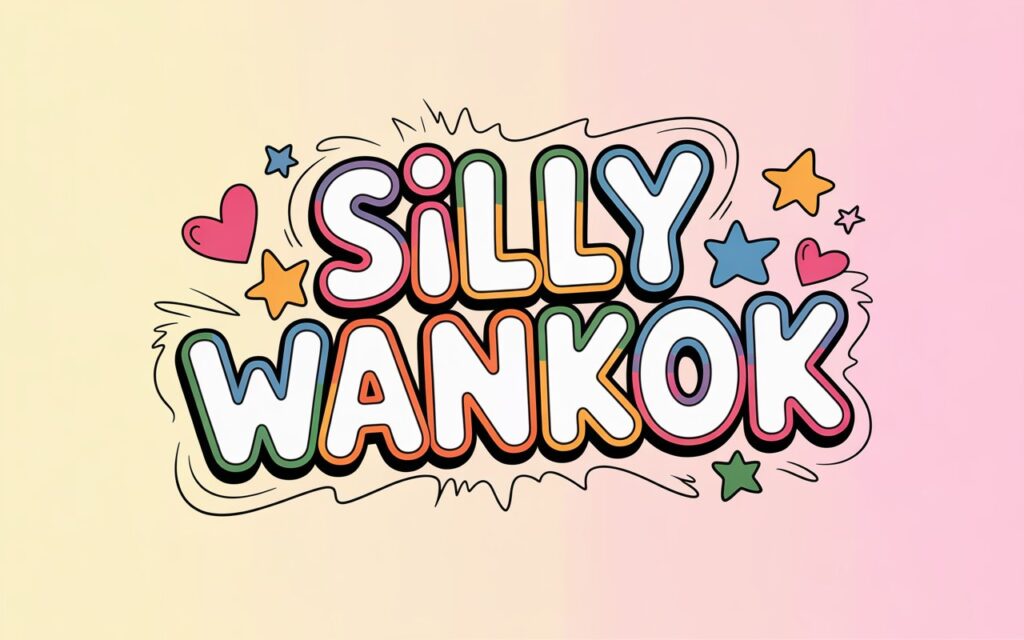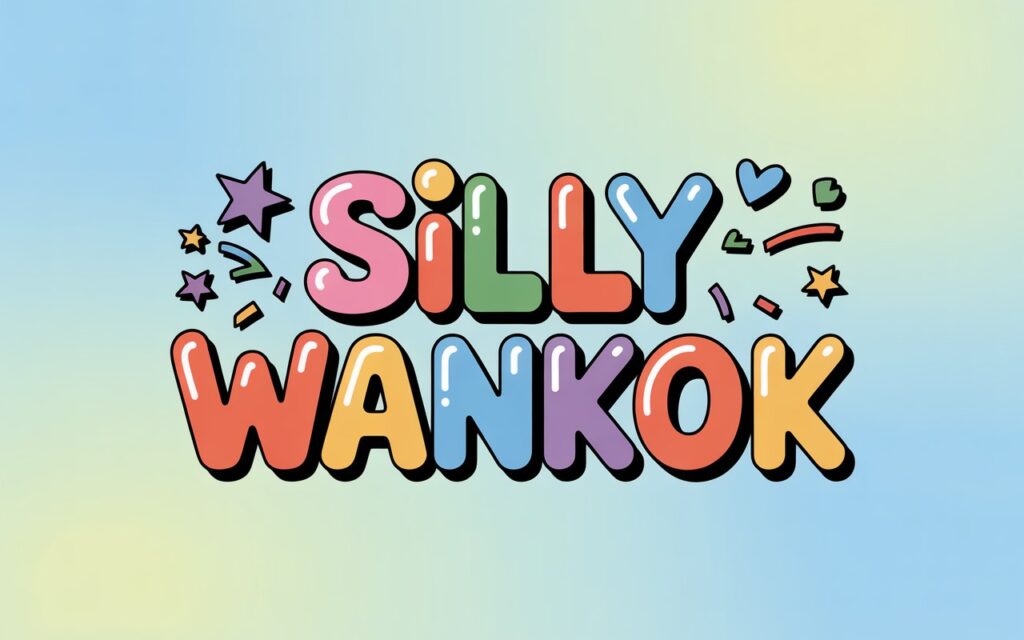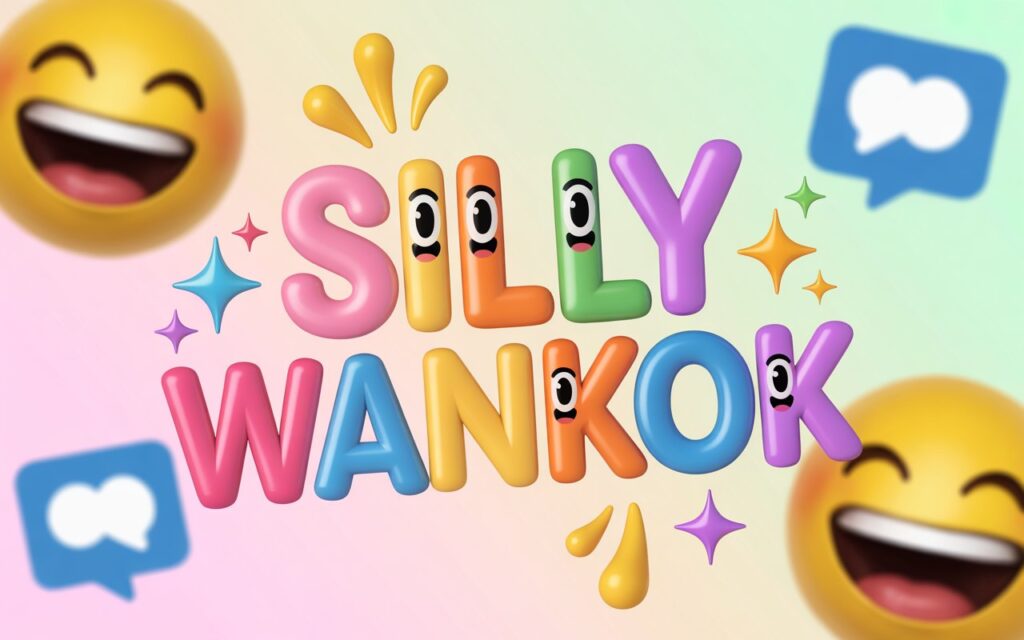Silly Wankok: Why This Weird Little Phrase Took Over the Internet

“Silly wankok” is a strange, funny phrase that popped up online and spread fast. It does not have a clear meaning. That is actually the point. It looks odd. It sounds playful. It makes people smile because it makes no sense. In 2025, that kind of random humor travels far.
People use “silly wankok” in comments, captions, and replies. Sometimes it sits alone like a punchline. Sometimes it tags along with a meme. Sometimes it is a reaction to a friend who says something goofy. The phrase is light. It is flexible. It fits almost anywhere, which is why the internet grabbed it.
Where did it come from?

Here is the honest answer: there is no single, proven origin. No one person can claim they made it first. That mystery helps the phrase feel bigger than one account or one post. It feels like the internet made it together. That is a big reason why “silly wankok” keeps moving.
Writers and posters have tried to explain the rise. They point to the way random words can feel fresh in a busy, serious feed. They also note how the phrase shows up across places where short, quick jokes do well. When lots of people repeat “silly wankok,” it becomes a tiny trend in itself. The loop feeds the loop.
Why people love it
First, surprise. When you see “silly wankok,” your brain pauses. It is odd. It breaks the pattern of normal talk. That tiny shock can feel funny. It is like a jump cut in a video. The laughter comes from the sudden turn.
Second, shared play. “Silly wankok” works like an inside joke. If you know it, you feel part of a club. If you add it under a post, others who know it nod and join in. That small feeling of “we get it” is strong online. It turns a random phrase into a mini community signal.
How people actually use it
You might see “silly wankok” as a reply to a friend’s dramatic rant. It can say, “relax, this is not that deep,” but in a soft and silly way. You might drop it under a pet video to push the chaos vibe. Or you might put it at the end of a caption to make the whole post feel lighter.
Here is a simple story. A group chat is planning a weekend hangout. The plan keeps changing. Everyone is a bit stressed. One friend types, “final plan: snacks, games, and silly wankok.” The words do not fix anything. But the mood shifts. People laugh. The plan comes together. The phrase did not mean something exact. It just reset the tone in a gentle way.
What “silly wankok” says about 2025 humor

In 2025, a lot of online humor is quick, short, and a little absurd. People scroll fast. They do not always want long setups. A weird phrase like “silly wankok” fits that speed. It hits in one second. It also lets people join in without fear. There is no correct use. There is no strict rule. That freedom invites more play.
This kind of humor also gives relief. The world can feel heavy. A nonsense phrase gives a small break. It is not rude. It is not mean. It is just silly. That is why “silly wankok” has legs. It offers a tiny moment of ease that anyone can copy and paste.
So… what does it mean?
Here is the simple truth: it means what the moment needs. If the vibe is chaotic, “silly wankok” amplifies the chaos. If the mood is tense, it acts like a pressure valve. If the post is already funny, it becomes the cherry on top. The phrase is a tool. The meaning is flexible.
Think of it like a sticker you slap onto a post or chat. The sticker does not change the base content. It changes how people feel about the content. That is a subtle but real kind of meaning. In that way, “silly wankok” is less a word and more a mood button.
How to use “silly wankok” in the right way
So how do you actually use “silly wankok” without overdoing it? The trick is to keep it light. Drop it when the mood needs a laugh, not when people are being serious. It works best when the timing feels natural — like a small wink in text form.
Think of it like adding a funny emoji. You wouldn’t send ten of them in one message, right? The same rule applies here. A little “silly wankok” goes a long way. One phrase at the right time can change the whole tone of a chat or post.
Try using it when a conversation starts to feel too serious or tense. For example, if your friend sends a long rant about missing the bus, you could reply, “Classic silly wankok moment.” It makes them smile instead of stress. It’s short, random, and perfectly harmless.
Common mistakes to avoid
Some people try too hard with trends like this. They repeat “silly wankok” too often or use it in places that don’t fit. When that happens, the phrase can lose its charm. Remember, the fun part of this viral word is that it feels fresh and playful. Overusing it takes away the surprise.
Another mistake is trying to give it a deep meaning. It doesn’t need one. “Silly wankok” is funny because it’s nonsense. Once you try to explain it too much, the magic disappears. Let it stay weird. Let it stay fun. That’s the whole point.
Also, don’t use it in serious or emotional conversations. It can sound confusing or out of place. If someone is sharing something real, it’s better to listen instead of joking. Save “silly wankok” for lighter times when everyone’s ready to laugh.
Why nonsense words keep going viral
There’s a reason nonsense phrases like “silly wankok” work so well online. They break the rules on purpose. In a world where everyone’s trying to sound smart or serious, a bit of silly chaos feels good. It’s a reminder that not everything has to make sense.
It also connects people fast. When you say “silly wankok” and someone else gets it, you share a laugh without even needing context. It’s like a secret handshake of the internet age. These small, funny trends remind us that humor is simple — it’s about surprise and timing, not big words.
And because it’s so random, anyone can use it. You don’t need to know a meme format or follow a trend page. You just say it, and it works. That’s the beauty of a phrase that means nothing but somehow means everything.
What makes “silly wankok” different

Many viral phrases fade after a few days, but “silly wankok” keeps showing up because it fits so many moods. It’s not tied to a single joke or meme. It’s open-ended. That makes it easy to reuse in new ways.
For example, you might see someone say, “That was peak silly wankok energy,” or another person post a photo captioned simply, “silly wankok vibes.” It adapts every time. That flexibility keeps it alive.
It’s also friendly. There’s no insult or negativity hidden in it. It’s playful, not mean. That’s rare online and part of why people enjoy using it. It spreads laughter, not drama — a nice change from the usual comment wars.
The lasting charm of “silly wankok”
In the end, “silly wankok” is not about meaning at all — it’s about feeling. It shows how humor has changed in 2025. We laugh at randomness, we bond over nonsense, and we use silly phrases to remind each other not to take things too seriously.
So if you see it again in your feed, just smile. Maybe type it once yourself. You’ll be part of a small, funny corner of the internet that still knows how to laugh at nothing — and that’s kind of beautiful.
Because sometimes, a little “silly wankok” is exactly what the world needs.



